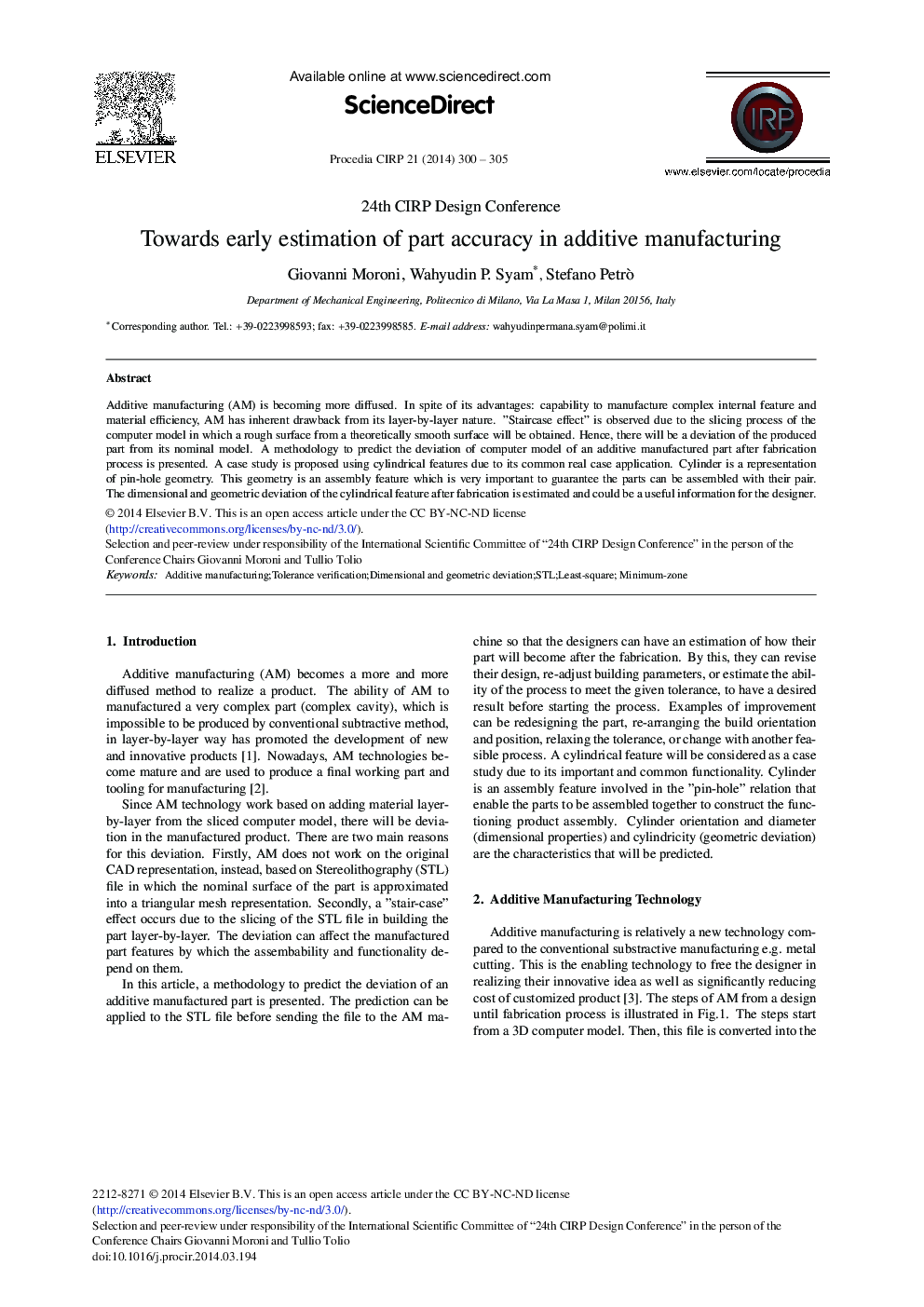| Article ID | Journal | Published Year | Pages | File Type |
|---|---|---|---|---|
| 1700043 | Procedia CIRP | 2014 | 6 Pages |
Additive manufacturing (AM) is becoming more diffused. In spite of its advantages: capability to manufacture complex internal feature and material efficiency, AM has inherent drawback from its layer-by-layer nature. “Staircase effect” is observed due to the slicing process of the computer model in which a rough surface from a theoretically smooth surface will be obtained. Hence, there will be a deviation of the produced part from its nominal model. A methodology to predict the deviation of computer model of an additive manufactured part after fabrication process is presented. A case study is proposed using cylindrical features due to its common real case application. Cylinder is a representation of pin-hole geometry. This geometry is an assembly feature which is very important to guarantee the parts can be assembled with their pair. The dimensional and geometric deviation of the cylindrical feature after fabrication is estimated and could be a useful information for the designer.
